Sony PMW300 Mini Review
Posted Feb 2014 - Updated 2nd January 2016. Moved to Blog section on website rebuild in August 2020.
In June 2013 Sony announced the PMW-300, the upgraded replacement for one of the main tools that I’ve been using the previous five and a half years, the PMW-EX3. In January 2014 I bought one for use in my corporate video business here in the Cambridge UK area. If you want to know why read on!
This is not a full review of the Sony PMW-300 and won’t go into the very detailed specs. Instead, I’m just going to outline (and show lots of pictures of) some of the more important features that I’ve noticed and like (or dislike) with the new PMW-300. In almost every aspect you can think of Sony has improved the design.
Background
The Sony PMW-EX3 has certainly earned a very good reputation as an industry workhorse. It sold well. It was a superb camera for the bulk of my corporate video business work. EX3s also had a reputation for being very reliable. In fact mine was totally reliable, which is just as well since it was well past it’s extended Sony Prime Support period (maximum 5 years cover) when I sold it in January 2014. The images it produced were excellent and much loved by my clients. However, the EX3 was starting to feel a little dated in terms of not having the XDCAM 4.2.2 MPEG-2 50Mbps “broadcast” codec - not that much of my material currently ends up on TV. The competition was moving ahead and we all knew it was just a matter of time before Sony finally upgraded the EX3.

Since November 2012, I have also owned (and still love) my Canon C100, see C100, along with some good Canon glass (bought originally for my Canon 7D). There are times when one really needs its superb low light performance and/or shallow depth of field control or perhaps an extreme wide angle shot and/or small, even stealthy, footprint - and the Canon C100 is great at all those! I shot some amazing footage in a dark commercial flight simulator recently with the Canon C100 and 10-22mm Canon lens at full wide and at ISO 12,800. It was fully usable (after some minor post work) and much admired by the client. Those shots would have been totally impossible (regarding picture noise levels) with the EX3 and no where near as wide in frame of view either.
Conversely, as any professional camera person in my line of corporate work knows, there are times when having an ENG type camera is so much easier for fast paced run-n-gun. The option of using a good powered servo zoom lens with decent range is key. When I’m shooting action in factories or evolving/unpredictable events for clients there really is not much time to stage manage every shot. Being able to work fast and get great results in one off situations is vital.
I accepted a long time ago that it is nigh on impossible to own just one reasonably priced professional camera that can do absolutely everything that I need/want. Sure, either of my main camera types can do “most things well” and it is certainly possible to do run-n-gun with the C100 pretty easily. However, whilst they overlap in many things, they each really excel in different areas. Having both a large sensor, small footprint cam (and lots of lenses) as well as a 1/2 inch sensor run-n-gun ENG type cam, gives me a lot more flexibility for 1 and 2 cam shooting scenarios. Importantly, they both provide a solid back-up solution should either one develop a fault mid-shoot too - gulp! It’s not happened to me yet but that’s not to say it won’t one day.
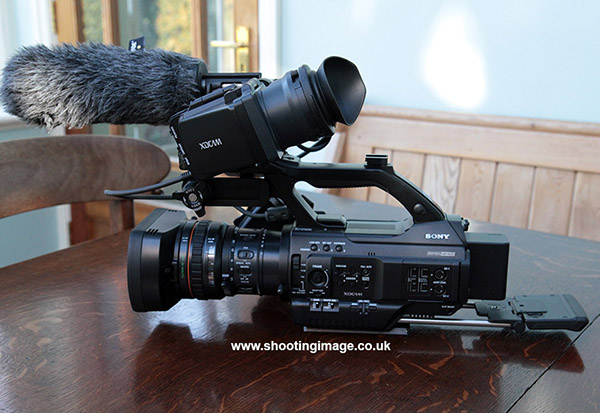
I absolutely love the XDCAM workflow and I’ve been using it since 2008 so I was very keen to continue with that. Sure, I’ve been editing AVCHD 1080psf25 at 24Mbps (ex C100) and AVCHD2 1080p50 at 28Mbps (ex Panasonic TM900) in CS6 for a while now. My 2009 Mac Pro and 2013 rMBP handle all that AVCHD natively with ease. However, XDCAM is a much nicer, more flexible and solid workflow all round. I had mild interest in the PMW-200 when that launched a year or so back but having had the EX3’s really rather good viewfinder arrangement (and the C100 with its really rather poor viewfinder!) it was clear to me that the next camera I bought must have a superb viewfinder design - and the PMW-300 sure has!

Why not just keep the EX3?
Within a day or so of the PMW-300 announcement I was definitely interested, especially when the first pictures of it appeared! As PMW-300s started to become available (towards the end of 2013) a business decision then loomed: Either keep the EX3 and play “wait and see” (and hope it never failed) or sell it whilst it still had some good value and upgrade to the PMW-300. That decision was pretty easy for me to make. It was time to sell, especially as my beloved EX3 was in absolutely perfect condition, not a mark on it, and fully functioning. I got (what I considered to be) a good trade in price for it against a PMW-300K1. In fact, I calculated that during the five and a half years I owned that EX3 it cost me less than £600/year (excluding insurance and Sony Prime Support renewal costs - once the initial guarantee period expired). That speaks for itself - try getting hired access to a good pro cam with 365 days, 24/7 access for that annual price!
Why not buy a 4K camera?
Sure, in late 2013 some more affordable 4K cameras were announced and these have caused a lot of web discussion amongst us video professionals. We should see a 4K Panasonic GH4 this month too if rumours are correct.
Let me sum my thoughts up like this. The recently launched Sony Z100, although an interesting cam, is just far too poor a performer in low light for my liking with its densely packed pixels on its tiny sensory - it is quoted at over 2 stops below my old EX3. Ouch! - no way would that be acceptable for my commercial needs! By the way, in case you’re wondering, I can’t justify the cost of a Sony F5 (and all the add ons it would need) - my clients won’t pay those rates! Anyhow, it would not be a run-n-gun camera. Or perhaps one should consider a Canon 1DC (4K internally) or a C500 (4K external recorder)? Simple, not for me as those options are horrifically costly.
I think that it could be a good 2, maybe 3 years before SOME of my clients would be willing (and technically ready to handle) 4K displayed material - but quite likely longer. Indeed, some of them have only very recently been able to happily show Full HD on their corporate laptops, often locked down with older software, limited codecs or specs by their IT departments. Only when those kinds of clients would be willing to pay for the time consuming and costly workflow of 4K will it make business sense for me to provide it. And this is the key. By then, hopefully, there will be affordable professional 4K cameras (say in the £5-8K range) that have low light performance and handling ergonomics for run-n-gun closer to what I need. Mind you, nailing accurate focus in 4K will be yet another major challenge unless we see superb viewfinders on those cameras. So that’s another camera generation away then, no need for me to worry about this PMW-300 purchase becoming obsolete anytime soon.
Just as a reality check on all this I did some tests. For many years I was an R&D scientist after all. Even though I have BT infinity (fibre optic Broadband) into my Studio with a supposed 80Mbps download speed (on a good day) I often found it impossible to watch YouTube 4K material without frequent buffering. Also, even though I have a lot of very high-end technology in my Studio (and in my house) I don’t actually own any 4K capable displays yet - my retina MBP was as near as I could get to that! Both these things told me all I need to know, for now.
And on top of that there has been an explosion in consumption of video material on portable devices in the last few years (HD formats optimised for iPads and Android devices are often now requested by my clients). 4K will be irrelevant on screens that small. In the near future, about the only thing 4K would be useful for (to me) is the ability to crop severely into the frame for Full HD delivery. I’ll just save my money for now and shoot how I want it framed to begin with. Simple!
Please understand I’m not a Luddite with new technology, in fact the opposite - which is why I launched headlong into file based Full HD workflow nearly 6 years ago when many were still using tapes - and a lot were still delivering in 4.3 SD. This is a rational decision I’ve made based on the facts as I see them right now. Of course, no one knows the future. However, in my estimation, my main client base (which round here in Cambridge is mostly high tech and more forward thinking than most) is still several years away from being sufficiently eager to pay for the extra cost of my company suppling them 4K corporate material. And if that changes, you can bet I’ll be the first to notice and react!
Sure, I might pic up a $2000 AX100 to play with sometime for some personal projects/test the workflow a bit, have some fun maybe! It’ll remind me of happy days with my old Sony HC1 (which I still have and still works - although I never use it now). But that’s as far as I’ll venture into 4K at this stage.
So, decision made - a new PMW-300 it was to be! In mid-January 2013 I finally found a slot in my shooting/editing schedule. Off to H Preston Media in Great Malvern I went and the deal was done. They were excellent to do business with by the way. I also bought yet another Sony BUP-60 battery and two Sony SXS-1 32GB cards (the most recent, faster types). Note: I wanted the K1 variant of the PMW-300 as I need the Optical Image Stabilisation that the Fujinon 14X lens has - it’s a near identical lens to the one on the old EX3 of course. The bigger and more expensive 16X lens with the PMW-300K2 does not have image stabilisation, in case you did not know. Some will prefer the extra reach of that lens. By the way, one thing to note is that the PMW-300 does not come with the Sony ACM-18 lens adapter, like the old EX3 used to come with. That’s why I kept hold of my adapter when trading in.
Initial Impressions of my Sony PMW-300
Within a couple of days of getting the PMW-300 I had to use it on an important client shoot for a global medical name. As any EX3 owner will find, it was a piece of cake to set up all the basic settings on the camera as needed. The menus are all so similar to what I was using before. Sure, I’ll be honest, I have not yet had time to try some picture profile set-ups but time will come for that. Anyway, the shoot went very well and there were no unpleasant surprises and the client was very happy with the end result!
So what do I think of it so far? OK let’s start with the main points of contact, the viewfinder and the hand grip. Much like the EX3, the hand grip can be easily rotated to whatever position feels most comfortable. One thing I noticed immediately is that the PMW-300K1 has an additional Iris button (located on the lens hand grip near the remote socket). That was a nice find as my EX3 did not have one in that location, see picture below. Now all I need to do is learn to use it as needed with a finger!
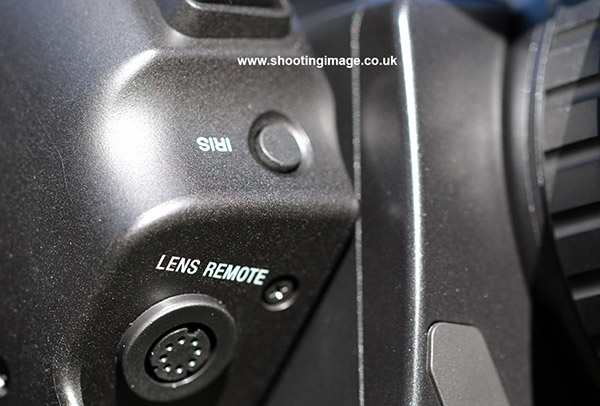
The PMW-300 is like many similar cameras, rather front heavy - especially if the viewfinder mounting arm is slid all the way to the front! Below are 2 pictures of both extremes in position for the viewfinder mounting arm and its locking nut. The angle of the arm is infinitely variable, in case it is not obvious. The most important take home message is that the viewfinder arrangement is absolutely lovely and it can be put in almost any position up, down, sideways, forward, back and angled that you will ever need it to be in.
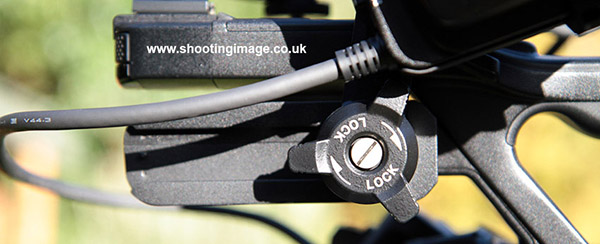
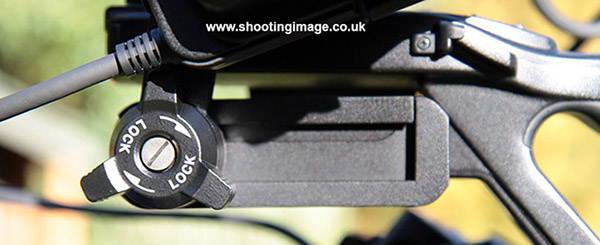
Below, you’ll also see a picture of the (rather difficult to reach) locking lever for outward travel adjustment of the viewfinder assembly. The viewfinder is really very good (it is the same as the ones on the Sony F5 and F55). Resolution is well up on the EX3 too and the viewfinder can be adjusted correctly for on the shoulder use, so as to comfortably line up with your eye. Switches around the viewfinder are also very easy to use. Furthermore, for interviews in small rooms, I like that by detaching (or just flipping up) the mirror and eye piece bit you then have a side facing LCD. Mind you, nowadays I’m often shooting interviews with my C100 and I expect that will not often change. But hey, I love the flexibility and excellent performance this viewfinder design brings.

One thing I did not notice immediately is that there are several cable clips located under the handle control and XLR unit areas, for keeping the viewfinder and mic cables snug. A nice touch, one shown in use below.
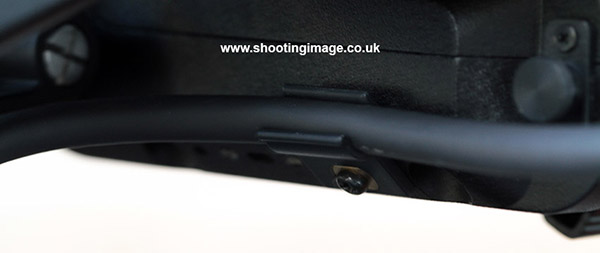
The whole viewfinder assembly is detachable if you need it to be for packing in an airline carry-on compliant bag. Good! I always found that tricky with my EX3, even with the Sony mic clamp removed - but always managed to get it on the plane with me! The viewfinder cable can also be unplugged, although I doubt I’ll ever need to do that. Below I have pictured the plastic cover which protects the slot where the cable plugs deep into the camera’s body. I did read that Alister Chapman managed to break this little plastic cover, in his PMW-300 versus Z100 review. It’s only held on by a thin piece of material to the knurled screw head that you can see in the picture. So be warned, handle this bit very carefully!
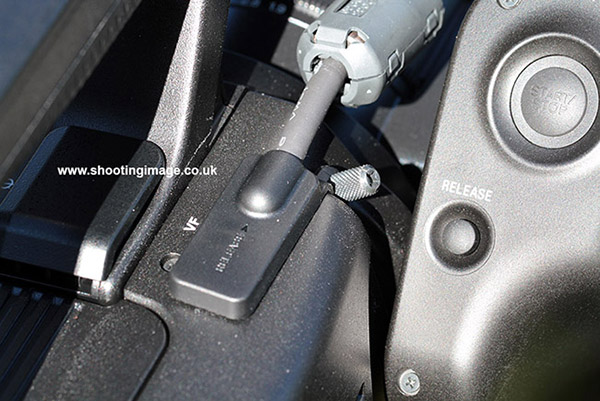
That aside, the PMW-300 build quality is a definite step up from the EX3, which was basically just entirely plastic casing shrouded over its internal metal chassis. This cam has a magnesium alloy casing and a few plastic bits attached to that. The plastic bits look rugged enough though. It’s actually quite difficult to work out which bits are plastic and which are metal, but it certainly seems up to the job. Being all black it shows marks from finger nails etc. (you’ll see a few in the pictures) but any of those easily wipe off. Overall, it is a longer/less distinctive shape than the EX3 but still fits in the two Petrol camera bags I typically used for mine - so no real worries there.
Almost immediately I got it, I removed the Sony mic clamp which sits very high up on the cam, above the XLR unit. This clamp, although an improved design over the EX series ones, still needed to come off. Why? Firstly, I prefer to use a Rycote Invision Video Mount (see what I think of that HERE ) for any onboard mic when doing run-n-gun (usually with my Rode NTG-3, sometimes with a Rode WS7 over it). Secondly, removing the Sony mic clamp makes the camera a lot easier to get into my camera bags!
Note: I currently have a DM Accessories mic attachment plate (‘200-Flat’) on order from the USA. This is listed as for the PMW-200 but I am assuming that it’ll fit the PMW-300 as the clamps and XLR box look, and surely must be, identical. UPDATE: It arrived. The screw holes in it line up perfectly. However, in order for it to sit flat on the top of the XLR box I had to add some sticky backed foam packing under the plate. This is because of 2 small protruding “locating lugs” on the top of the XLR box that do not fit into the spaces drilled under the plate, I assume for similar lugs on the PMW-200. These must be for making sure the Sony mic clamp lines up correctly. I deduce that the lugs on the PMW-200 XLR box must be smaller than on my new 300! Sure, I could have filed the lugs off my camera but I don’t want to do any non-reversible modifications just yet. Anyway, the 200-Flat fits just fine now after my packing, pictured below.
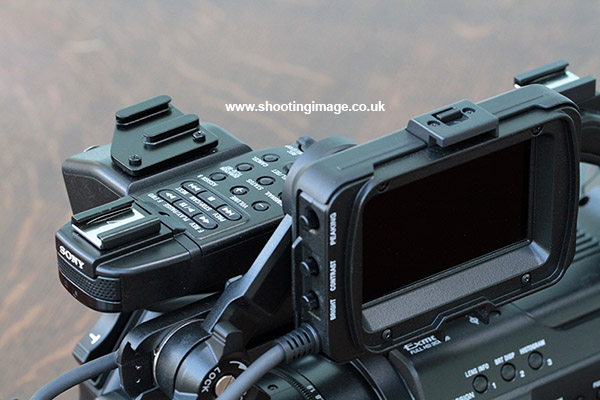
I also attached the (Sony supplied) cold shoe over the handle’s rear 1/4 inch hole as I find that a more useful fitting for my particular needs, although it makes the cam less comfortable to carry by the handle. You can just see it in position in the picture above.
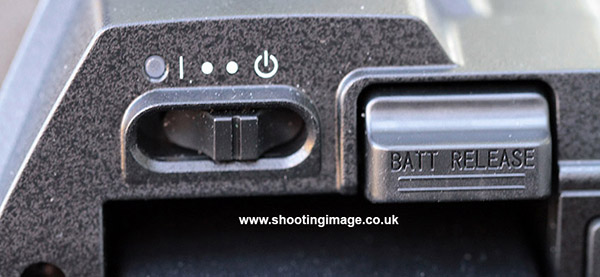
The Power switch, seen above, needs a special mention. A simple thing you might think but the one on the PMW-300 is SO MUCH BETTER than the one on the EX3! It also has a LED power indicator. Thank you Sony! I could never tell if it was on or off with the EX3 and frequently overshot the central off position. The PMW-300 also boots up pretty fast too - and if you are in a real hurry use the rapid power on method by holding the Record button too. Also, don’t forget once it’s on you can enable cache recording in the menu with up to 15 seconds pre-recorded.
As you can see, Sony decided on just 2 positions for the power switch. Reviewing of media is now all done via the Menu controls that can be accessed e.g. via the side of the cam, pictured below and also the playback controls on the front/top handle control area. It’s so much better this way than the clumsy, time consuming route needed with the EX3 re-booting 3 position switch scenario. Of course you still have the Last Clip Review button on the hand grip and can delete it very simply (if needed) via any button you assign to that function.
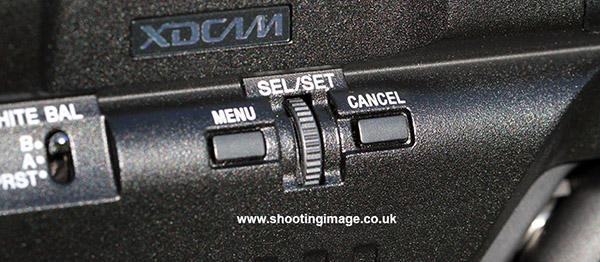
Indeed, the top handle controls are very similar to the EX3. I prefer the new “flat topped” joystick design to the pointed one that my former EX3 had. Shot transition has gone - it was under the handle on the EX3 - mind you I don’t think I ever used it. But generally it’s all pretty familiar and reassuring to any former EX3 owner, as you can see in the picture below.

Audio controls are pretty straight forward too. This time you get 4 channel 24 bit audio though - nice! But note that you can only input 2 sources via the XLR sockets and the internal handle end mic feeding the other two channels is going to pick up every handling noise! But hey, there may be times when it’ll provide some atmospheric stereo audio for mixing in with the main sources I’ll have wired in. By the way, anyone wanting a good grounding on how best to use the 4 channel audio set-up (and a lot of other aspects) on the newer PMW series should watch some of Doug Jensen’s video tutorials, extracts of which appear on his Vimeo Channel. I also like the bottom hinged audio cover a lot better than the side hinged clear plastic one on the EX3. I’m amazed I never accidentally ripped that flimsy one off - at least it’s a bit more obvious when this one is left open! This cover also has cut out discs so you can still access the audio levels via finger tips with it closed. Mind you, with it up on your shoulder and this lot next to your ear that’ll be pretty difficult in run-n-gun, so that’s for tripod use only!
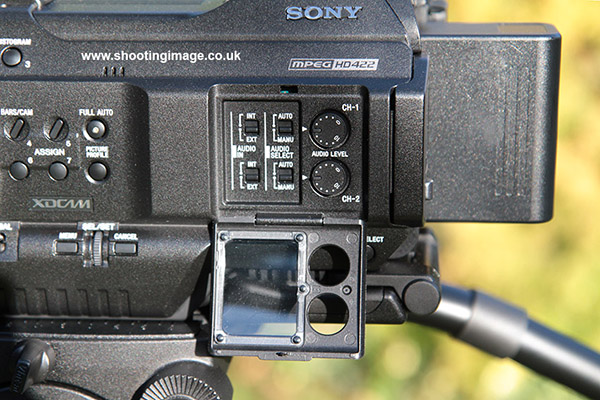
That brings us neatly to the extending shoulder pad. Well, it is definitely a big improvement on the angled semi-shoulder extending pad on the EX3. This one will actually rest on the top of my shoulder. But as is well know, Sony did a silly thing here. Or to be fair, let’s just say it’s a design compromise we see. If you have a tripod plate on the camera (and I always do) then you HAVE to remove that plate (or at least loosen it and slide it forward) in order to be able to access the release/locking clip for this shoulder pad. I’ve included a few pictures below to illustrate all this. At least the base of the PMW-300 is both tough metal and flat, neither of which the original EX3 managed. That’s why so many people fitted aftermarket plates like the DM accessories one that I had on mine (which then prevented the shoulder pad from extending anyway).
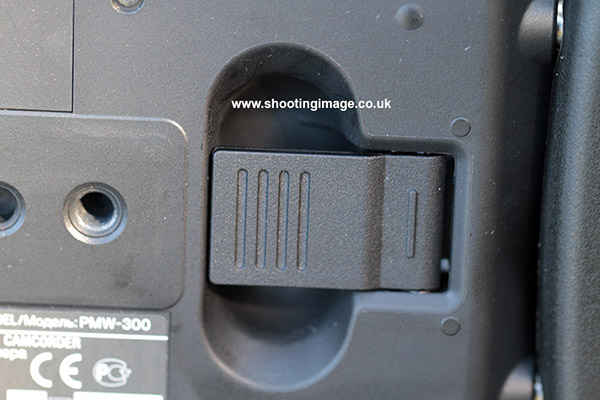
Only real way round the fact that this release catch will be hidden under a tripod plate is to leave the shoulder pad extended on the rods all the time (it has an extra extension at the very end which can be folded back when required for packing). Below I’ve shown it from the underside of the PMW-300 in that fully extended, but still folded under, position. By the way the PMW-300 is 443mm long (just under 17 and a 1/2 inches) with it in this position and with the lens hood on. Now, please note the second release catch on the end piece. Using this takes the PMW-300 length (for any on the shoulder shooting) to 513mm (or about 20 and 1/4 inches). Of course, you could always lock the first extension at any point in its travel on the rods if that suits. It could be positioned about 40-43mm further in - i.e. forward - before the second fold out section fouls the particular Vinten tripod plate I use for my excellent Vision 3AS system, as shown in the picture below. However, it won’t be as effective for shoulder use then. I’m still experimenting with all this and the best position for this tripod plate to get good balance on my tripod (it may well have to sit a bit further forward than shown below). Note: There are three, 3/8th inch threaded mounting holes (all very close together) on the PMW-300s base and you can just see the middle one was not in use in my shot below.

This next picture below shows the shoulder brace with the end part released and folded up to its locking position (ignore my tripod handle behind it). One thing I noticed is that this end bit has a little play (a few mm) when in this locked out position. Sure, it’s secure and up to the job required, but I just don’t like anything that can rattle around a bit on cameras so I’ll have to see how that goes. By the way, notice the 1/4 inch mounting point hole on the upper surface, directly below the end of the battery. If you use Sony BUP-60 (or larger) batteries then you’ll not be able to mount anything here as they protrude over this hole, unless one uses a rectangular cage or frame of some sort, or perhaps an L shaped bracket.
And while we’re on batteries, note that Sony again listened to feedback (e.g. relating to the PMW-200) and this time did NOT mount the DC in socket within the battery compartment (thus preventing one connecting up external DC power during continuous recording if a battery might be running low). The PMW-300 can be externally powered without needing to remove the battery, just like the EX cams. Glad they reverted to that! I don’t use non-Sony batteries but I gather there are currently very limited options on ones that work with the PMW-300. I guess that’s where this mounting hole could prove useful, for getting a large battery pack bolted on the back - and that might help balance the cam a bit better too! Note: The handbook states no more than 1Kg should be mounted here.
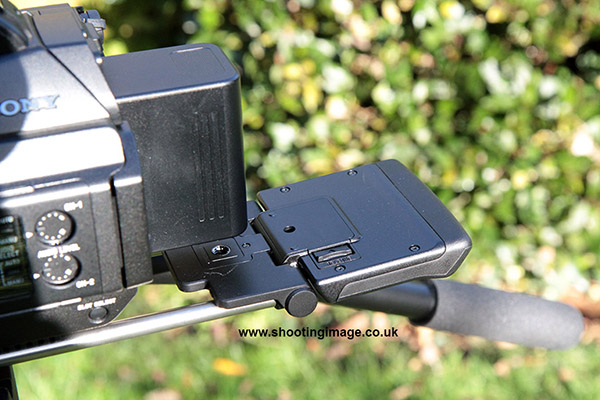
Codec options are a very big area of improvement over the EX3. Firstly, the PMW-300 has XDCAM 4.2.2 MPEG-2 at 50Mbps, i.e. a “broadcast friendly” codec. Excellent, unless I want higher bit rates (rarely in what I do), then no need for an external recorder. It’ll also do the older/lesser XDCAM-EX 4.2.0 MPEG-2 at 35Mbps codec, plus a number of other formats, should you want them (I won’t be using them). Just see the Sony PMW-300 specs pages on the web for full details.
But the really big news is it will definitely get the XAVC codec upgrade “sometime in 2014”. Nice bit of future proofing. This was important to me as I envision keeping this camera for another 5 years if it proves to be as good as the EX3 for what I do. And why would it not! Now, we don’t yet know full details on what “flavour” XAVC Sony will add, but I would be highly surprised (and very disappointed) if it’s just the XAVC-S variant on a professional tool at this level/price point. I’m also definitely expecting 1080p50/60 capability in some form or other. Ideally, this firmware upgrade won’t cost anything either. But, as always with these things, we’ll just have to wait and see as to what Sony announces later this year. Note, that until then, Sony have released a 20 minute video lecture which outlines in some depth the technical details of XAVC, XAVC-S etc. and the broad roadmap they are following. UPDATE: 3/3/2014 - According to Alister Chapman it is unlikely the PMW-300 will be able to do any form of 1080p50/60 XAVC. Still awaiting official news from Sony but all they told me at BVE in late Feb 2014 was that “details will be announced in the summer”.
Back to here and now. So what are we recording onto? Below I’ve pictured the media door open with two SxS-1 cards in. Thankfully, the door is black and not silver like on the PMW-200! I know, colour of these things is a minor thing but it looks so naff in silver! One thing though, on my EX3 (with 1080p 4.2.0 at 35Mbps that was not over-cranked) I could reliably use 16GB Sandisk SDHC cards in Kensington Expresscard 34 adapters. The media door on the EX3 gave a lot of physical headroom (space) above the card slots and so coped with the adapter protrusions. Not so on the PMW-300, it’s a very tight, snug fit in there when that door is closed. So you’ll definitely have to use SxS, SxS-1 or other media with “official” adapters like the Mead ones (or leave the door open and risk ripping it off). No worries as I now have enough SxS-1 and SxS media for all my needs and won’t be resorting to those old SDHC card adapters anymore. I never had any issues (and I never used them on any critical work) but many did have issues. I’m glad to leave that risk behind. I expect from now on I’ll be using 50Mbps 4.2.2 more or less universally with this cam anyway. Finally, one minor gripe is that it is a little tricky to remove the SxS card from the right hand slot when the battery is in place, but thankfully not impossible!
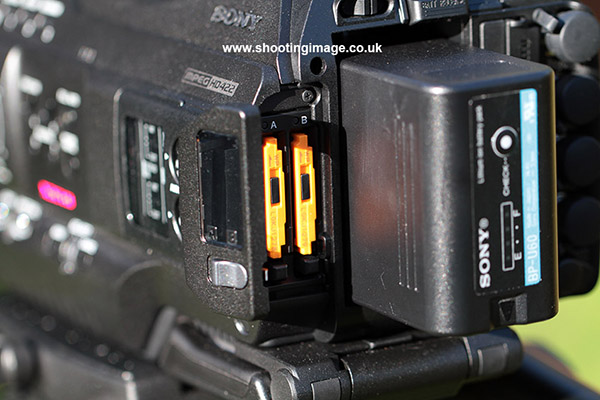
Now a few other things to note about the more general controls. The Frame Rate control knob on the side of the PMW-300 still gives the pleasing blue ring when in use. Always makes me smile when I see that! There are 4 ND filter positions, i.e. clear and 3 NDs, up one from the EX3. Sounds like a small upgrade but its important as it adds a little more flexibility in enabling one to use the lens in its sweet spot in more or less any light conditions and better control of DOF. The Shutter on/off button has been moved round to join the side controls. It is now just below this Frame Rate knob rather than hidden away on the front right bottom corner of the camera body, EX3 style. The White Balance button is still front bottom left, by the way. The PMW-300 also has a rear IR receptor so you can use the supplied remote control from behind the camera, unlike the EX3 which needed a lashed up foil reflector near its front facing IR receptor to make that possible. There are a myriad of in/out connections at the back end and back right side of the camera. I won’t list them but I think you’ll find everything you could possibly want! See official Sony specs for the details.
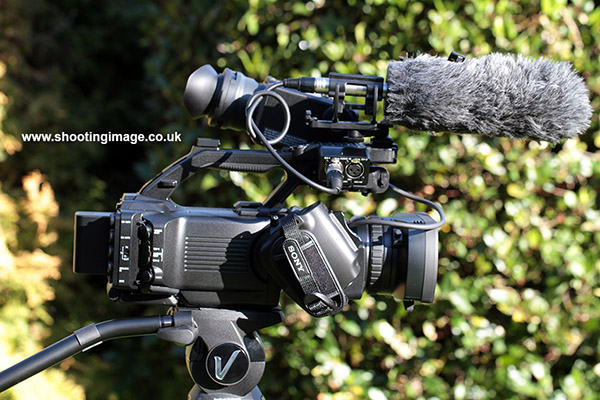
So, my initial impressions are very favourable. Sony really did listen to feedback on the EX series and following the earlier PMW-100, PMW-150, PMW-200 launches. The PMW-300 has so many little improvements over its predecessor, and a few important big ones too. The sum total of these changes makes me feel the Sony PMW-300 is a very big jump up from the Sony PMW-EX3. It seems so much more of an accomplished and user friendly camera than it looked on paper when I was comparing specs. Build quality, amazing and fully removable viewfinder, great codecs, improved image with better noise reduction (60db as opposed to 54db is quoted - that’s a big step!), better shoulder pad design, improved button layout, ability to clip review much faster without needing to reboot the camera…I could go on but if you’ve read this far you get the picture. It’s also future proofed to a fashion with the XAVC firmware update it’ll get later this year.
Bottom line. It’s a fine upgrade and, to me, well worth the trade up cost. The PMW-300 should see me good for a number of years ahead in my line of work. No it’s not 4K, but my clients want beautifully shot Full HD and they want it NOW, and that’s what this camera is all about. I’m happy!
UPDATE 15th Feb 2014: Sony have just issued a firmware update for the PMW-300, available via their official websites. This is to reduce chromatic aberration. I’ve not noticed any issues with my camera but then we’ve hardly had sunny/high contrast light conditions here in the UK the last few weeks - just rain! I will be updating my camera with this new firmware soon but will take some test shots before and after if the weather co-operates. However, I am just waiting to ensure that no glitches are reported with this new firmware before proceeding.
UPDATE 16th June 2014: The PMW-300 has indeed been the trusty work-horse I was expecting it to be. Recently, I updated the firmware to the newly available version 1.20. This enables 10-bit XAVC options (can be found in the Menu>Others>System>exFAT section after updating). I’ve yet to shoot in XAVC since, to edit it, that’ll need the new high spec Mac Pro and NLE software that I’m considering purchasing in the next 2-3 months (CS6, which I have running on my 2009 Mac Pro and late 2013 retina MBP won’t handle XAVC natively).
UPDATE 29th Dec 2014: There was a further firmware release (1.30) in the autumn of 2014 that added more variants of the XAVC codec. Log into the Sony Professional site to learn more. Note: I now have a new Mac Pro and CC so have the ability to edit XAVC too. Furthermore, in Dec 2014, Rick Young’s excellent MovieMachineTV published a video review of the new PXW-200 where (in the last section) an updated PMW-300 was also discussed and shown - the new model is called a PMW-300/1 or PMW300/1. Interestingly, Bill Drummond of Sony mentions that this PMW-300/1 has “ergonomic improvements to both the viewfinder arrangement and the shoulder pad”. I don’t know any more details than that (as yet) but if you’re thinking of buying a PMW-300 it might be worth speaking to your dealer.
My hunch is that Sony will actually release a PXW-300 in the not too distant future which will incorporate 1080p50/60 XAVC options (as seen in the new PXW-180 and PXW-200). However, that might be 6-12 months away (at least) - or why would they have bothered with the PMW-300/1 update if it was to be superseded sooner? Mind you, at the rate Sony are releasing new cameras, who knows!
UPDATE 21st Aug 2015: The PMW-300 is still my main ‘go-to’ camera and, like my C100, has paid for itself many times over. However, I am (at last) seriously considering getting a 4K camera to supplement my video cams. I don’t expect to deliver in 4K for a long while so this is just for acquisition and reframing purposes.
Looked very hard at (but ruled out) the Sony FS7 as it appeared not long after I got my PMW-300. Mind you, I’m not really keen on relying on lens adapters for paid work, plus it was rushed to market with a few firmware foibles that would annoy me - a FS7 MkII with a proper shoulder mount and better viewfinder arrangement might get me on-board.
At a lower price point, I got initially interested in (but then also ruled out) the highly flexible JVC-LS300. It’s mainly because the image quality does not seem to be where I’d want it to be (from most of the examples I’ve seen so far). I doubt the recently announced JVC-Log firmware will change my viewpoint - but it will be interesting to see what they can squeeze out of that sensor - I’d love to be proved wrong!
Going cheaper, I looked very hard at the Sony X70 (and the baby AX100) but still not sure about shooting 4K with a codec that currently maxes out at 60Mbps on that X70. Again, it looks like another rushed to market cam by those that know the history with Sony’s recent releases. Pity, as on paper it seemed like an ideal baby XDCAM to the PMW-300…might revisit that one. Still with Sony, the A7 range looks impressive (e.g. A7s and A7r MkII - but I’m not going down the awkward DSLR/stills body for video route again (and the latest variant overheats in 4K mode anyway).
Currently, I am interested in the Panasonic DVX-200 as that might well suit my shooting style, offer 50p 4K capabilities (and 120p in 1080p) and good image quality/dynamic range (V-Log) without breaking the bank for camera or media costs. Seems a very well thought out offering but there have been some worryingly poor video examples on the web with pre-production cameras. Looking hard at the C300 MkII too - but that one is horrifically expensive, will use very expensive media plus produce huge files and still has some funny foibles, ergonomics and very limited HFR options. Not sure my corporate clients will pay the rates I’d have to charge to support a “C300 MkII ecosystem”…but I could pay off a DVX-200 or Sony X70 very quickly. Thinking I’ll wait until after IBC in September before I make my mind up - just in case Sony launch yet another raft of cameras! I guess I’ll be using the PMW-300 and C100 for a little while longer then!
UPDATE: 16th Sep 2015: As mentioned above, I’ve been thinking hard about buying a C300 MkII all summer. But in the end it’s just too damn expensive an ecosystem for a 4K camera that still has some (in my view) serious limitations, especially concerning high frame rate options. Sure it will have some terrific capabilities, but media costs and those huge 4K files for archiving worry me. I also looked hard at the Sony FS7 but, whilst it’s a terrific camera, it’s just too cumbersome for my specific needs (and it’s sluggish menu system, bugs etc. would annoy me - plus it still needs add ons to make it a true shoulder mount cam anyway). I’m also considering buying a brushless gimbal and I really wanted a smaller cam for that.
So I sat and waited for IBC and, as I’d hoped, Sony launched something smaller - the PXW-FS5 on 11th September. It looks like a Canon C100 MkII killer to me! I pre-ordered one immediately (and a Metabones MkIV EF to NEX adapter, both with CVP.com) as this cam will fit my needs far better.
With 10-bit Full HD (4.2.2 1080p50 XAVC Long GoP at 50 Mbps) the Sony PXW-FS5 should be a terrific S35 successor to my Canon C100. The PXW-FS5 has a much better codec than what Canon is offering in the C100 MkII (although the Inter-frame version of XAVC would have been even better). It also has Full HD HFR (high frame rate) burst options at up to 240 FPS. Furthermore, it’ll allow me to dabble in 4K (actually QFHD) with its internal 8-bit 4.2.0 XAVC Long-GoP at 100Mbps capability - sure more of an “entry level” 4K capability for a S35 sensor cam - 10-bit 4.2.2 and a higher bit rate would have been terrific. However, what’s on offer is good enough for my specific needs (at this point in time) as 4K is still some way off with my client base. Even better, a future firmware update for “true 4K” and raw output has been promised - so with an external recorder some future options become possible.
Even at the rather high launch price of £4,100 + VAT (which I expect will fall quite a bit nearer actual availability date), the PXW-FS5 makes the C100 MkII now look very overpriced. I might also buy the Sony 18-105 G lens too - still wondering about that. Anyway, if all goes well I should have my FS5 by November and the C100 will then be downgraded to my C cam.
UPDATE: 8th Dec 2015: Well my FS5 arrived about 10 days ago (and a new Letus Helix Jr 3-axis gimbal about a week earlier). Not had much time to use the FS5 and Letus yet as this is proving to be a very busy time for me - lot of client film work going on! So for now I’m just posting my thoughts, as and when I can, in a thread on the DVinfo Forum - Google PXW-FS5 Initial User Impressions. I did buy the Sony 18-105 G lens too - but it’s a bit of a love/hate relationship! There is also a very useful thread on the DVinfo Forum about lens choices for the FS5 too.
UPDATE: 2nd Jan 2016: I’m now posting more information on how I’m getting on with the Sony PXW-FS5 and Letus Helix Jr. 3-axis gimbal HERE.
Back to the TOP
